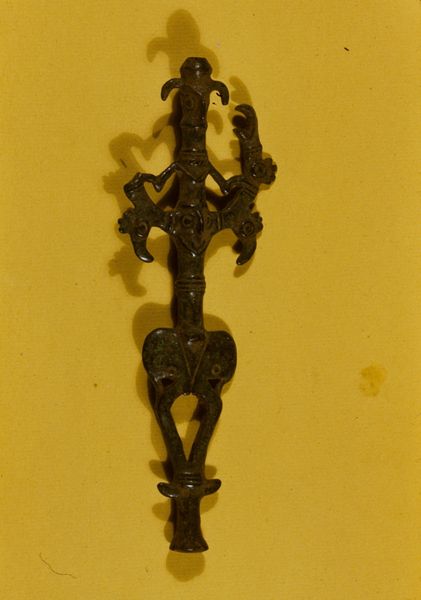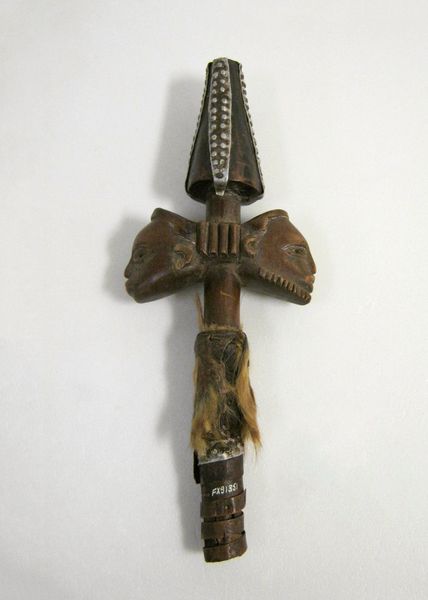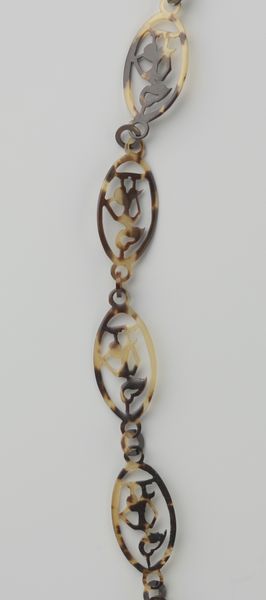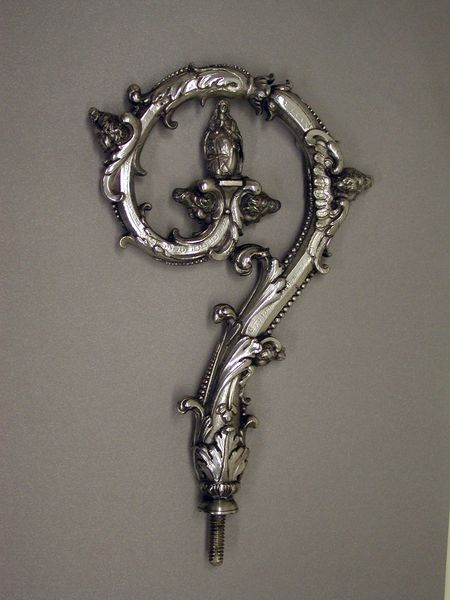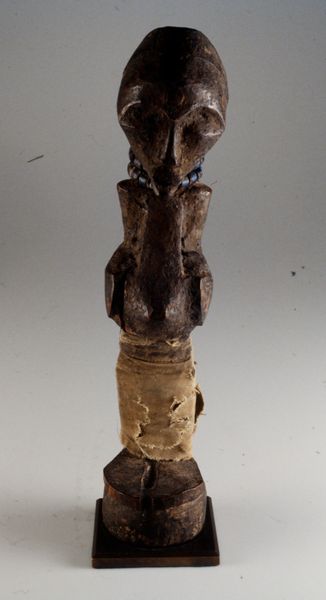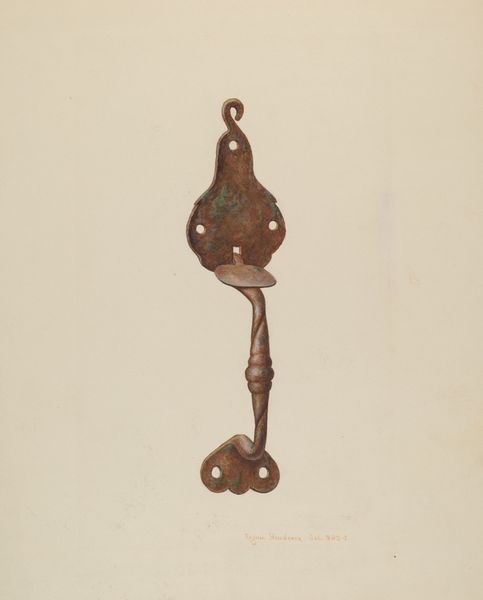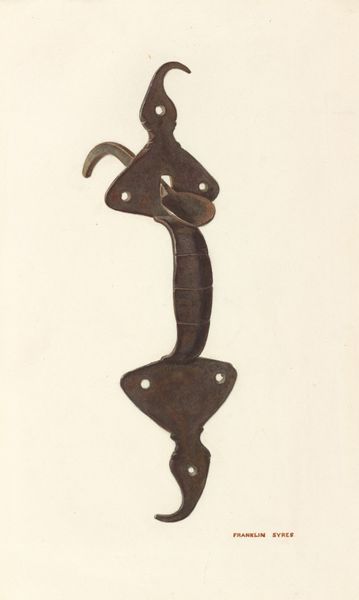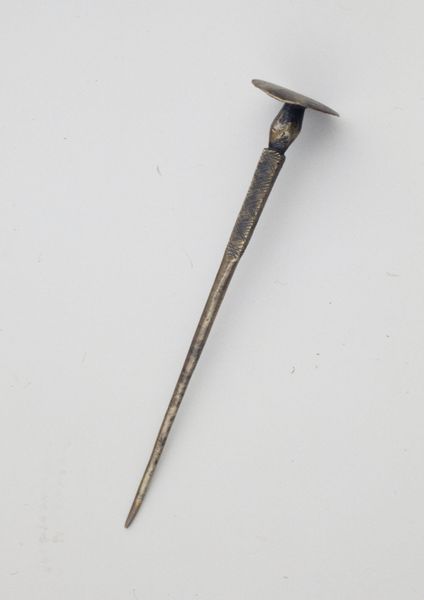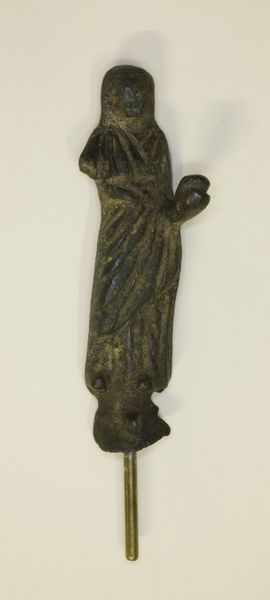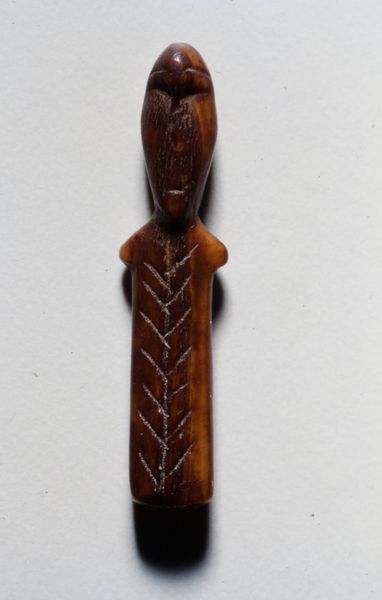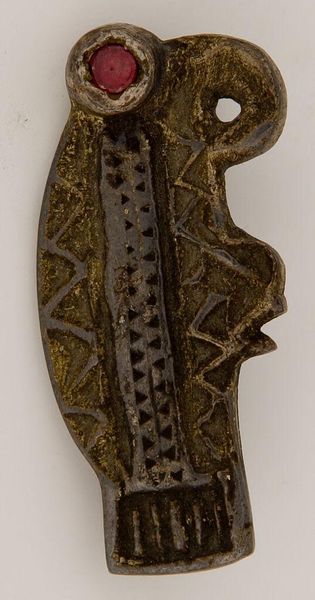
sculpture, wood
#
sculpture
#
figuration
#
sculpture
#
wood
Dimensions: 98 x 12 x 10 3/4in. (248.9 x 30.5 x 27.3cm)
Copyright: Public Domain
Curator: Here we have a Ceremonial House Figure, attributed to the Abelam people, likely created around the 20th century. Editor: The texture of the wood is calling to me. It gives the impression of meticulous labor, all of those subtle shifts and carvings… Curator: Absolutely. Abelam art is integral to their yam ceremonies. This figure would have played a crucial role, symbolizing ancestors and their connection to the land and its fertility. The form, to me, speaks to the deep-rooted cosmologies informing Abelam social structure. Editor: Speaking of fertility, observe the verticality of this work and how that intersects with what seems to be the painstaking production involved. You have the raw material of wood, then consider how that reflects this figure's purpose as it sits displayed in a house, rooted in ceremonial action. I am thinking here about consumption and display too, how all these material actions speak to that larger whole. Curator: The elongated features and symbolic figures intricately carved into it...consider these, though, as signifiers. They reference the clan’s lineage and historical narratives central to social cohesion. What stories might be told around it? What rituals are enlivened? Editor: And the white pigment is an interesting addition to all this labor; is it clay or perhaps chalk that makes up those starkly different features? These pigments change its character too. To consume all this information really is a full package. Curator: The layered carvings, incorporating figures from ancestor stories—I can see a genealogy etched in every level. The whole piece, for me, underscores the Abelam commitment to preserving and honoring intergenerational connections. Editor: Yes, an item for connection indeed. Reflecting on materiality in these forms provides insight into culture as labor as performance; such considerations expand into a richer analysis about objects, like this Abelam figure, which can reveal historical perspectives beyond simplistic cultural narratives. Curator: Looking closely really underlines the power of indigenous artistry, especially regarding social structures that move through objects like this piece, where the ceremonial is intrinsically connected to their complex belief systems. Editor: Indeed, material investigations enable us to broaden how we consider the labor invested to create these connections.
Comments
No comments
Be the first to comment and join the conversation on the ultimate creative platform.
